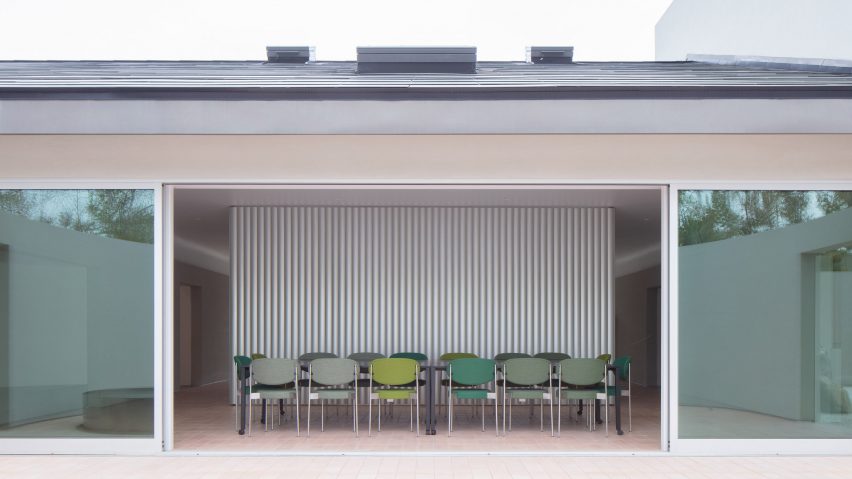
Leong Leong transforms 1970s Los Angeles ranch house into "suburban sanctuary"
New York studio Leong Leong has renovated a 1970s ranch house in Los Angeles by adding a large wall, outdoor spaces and a polycarbonate panel-wrapped second storey.
Completed in LA's Hancock Park neighbourhood in 2023, the 6,000-square foot (558-square metre) the house combines domestic settings with a place for institutional programming and social gatherings.
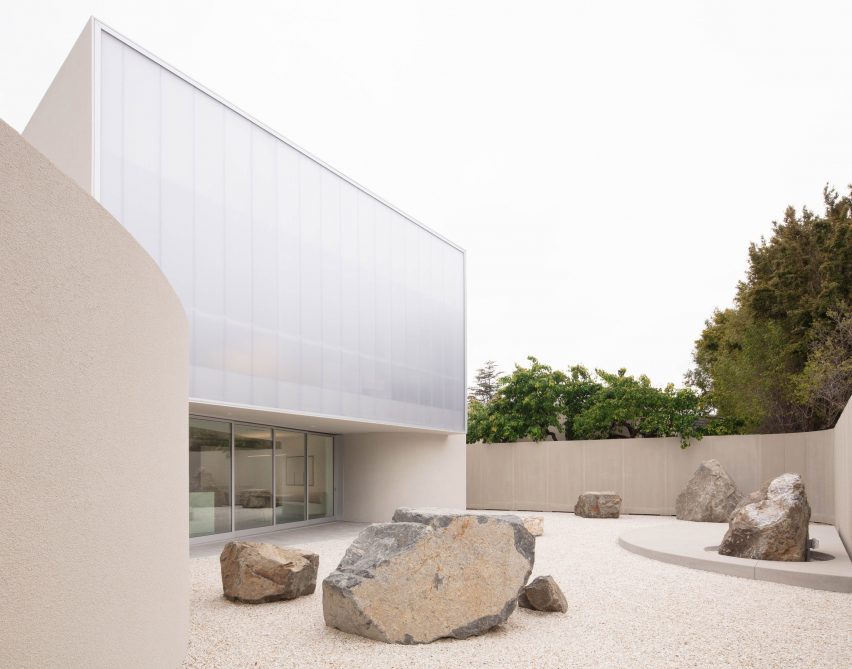
Located at the end of a cul-de-sac, the 13,534-square foot (1,257-square metre) lot was walled off along the perimeter, providing privacy in one of the city's oldest and most well-preserved neighbourhoods that boasts wide, tree-lined streets and grand Spanish Revival and English Tudor homes.
Due to local historic preservation guidelines, the team only renovated 50 per cent of the existing house. The team opted to reorient the entry around the back, revising the suburban typology to connect with the Southern California climate through courtyards, a pool area, and a rock garden.
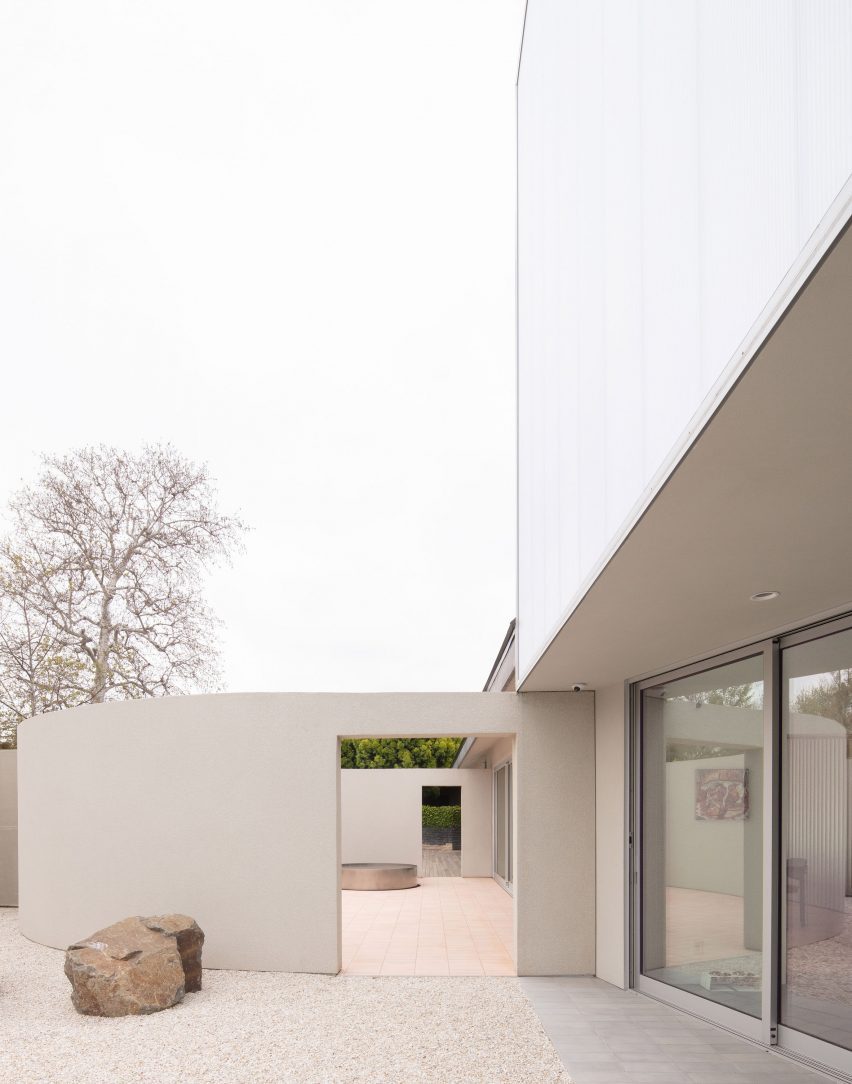
"We were inspired by the client's desire to rethink cliches of contemporary domesticity and create a home to live with art but not be saturated by it," co-founder Dominic Leong told Dezeen.
"Rather than erasing the DNA of the existing ranch-style house, we were more interested in transforming it into a suburban, energy-efficient sanctuary with distinct realms for different aspects of their family's lifestyle."
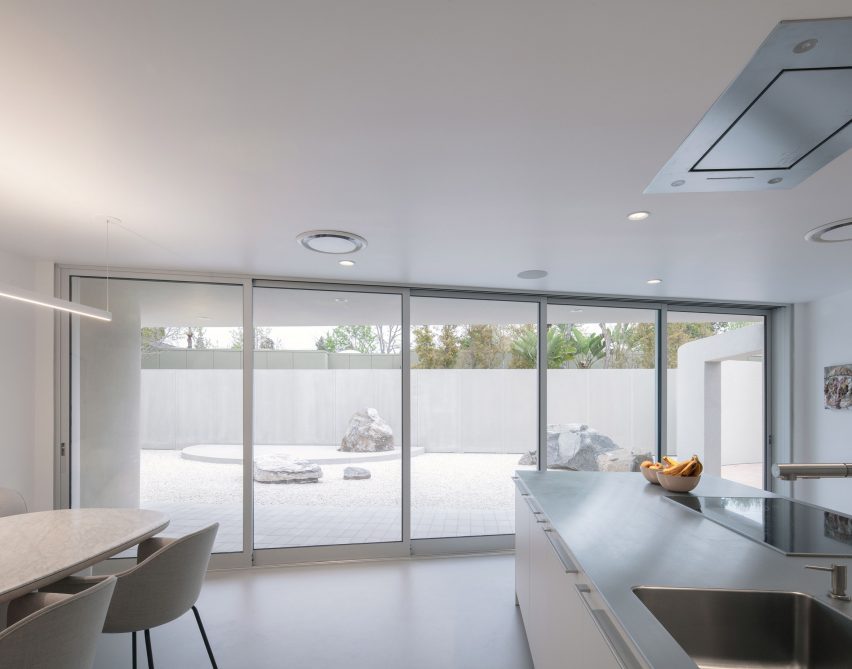
The team added a continuous wall that inverts the home's relationship between inside and outside, old and new and public and private, and the home is meant to be a "serene indoor-outdoor suburban sanctuary for living with art".
The wall is angular on the south side of the house with a set of steps leading up to an entry courtyard. On the north side, the wall forms a semicircle, dividing the rock garden from the pool.
Leong Leong also added a second level above the kitchen that holds a dedicated playroom, topped with a roof deck that affords views of the skyline. Additionally, the team added a 24-kilowatt Tesla solar roof array that powers the home, bringing it to a net-zero energy structure.
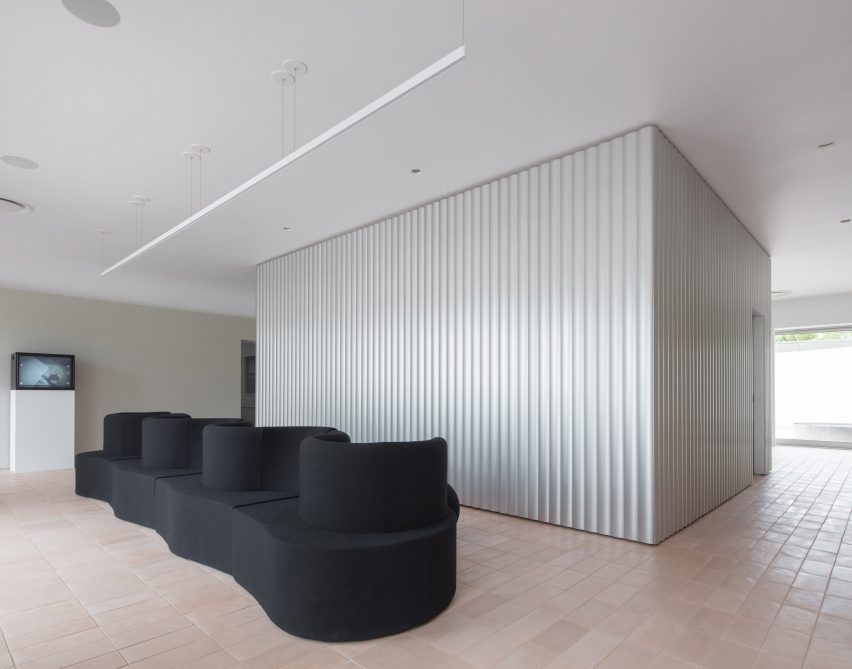
"Our approach was also informed by artists like Dan Graham and Mike Kelly, whose work explores how suburban architecture shapes our social experience and the complexities that underlie its conventional façade," the team said.
"We found that embracing the contradictions between historic preservation guidelines, a family's unconventional lifestyle, and reducing environmental impact, was equally rewarding as trying to find perfect alignments."
"In fact, the confluence of these factors sparked a kind of alchemy that makes the house feel contemporary but also contextual, familiar but also unexpected."
The design employs a vernacular material palette with sand-coloured stucco walls, precast concrete, and a large, translucent polycarbonate second-storey facade. The team also played with off-the-shelf products in various uses.
For example, ceramic tiles in a soft peach hue spread across the floor, transitioning in the kitchen to Forbo, a rubberized flooring material that wraps up the stairs and across the counters, backsplash, and walls of the children's rooms.
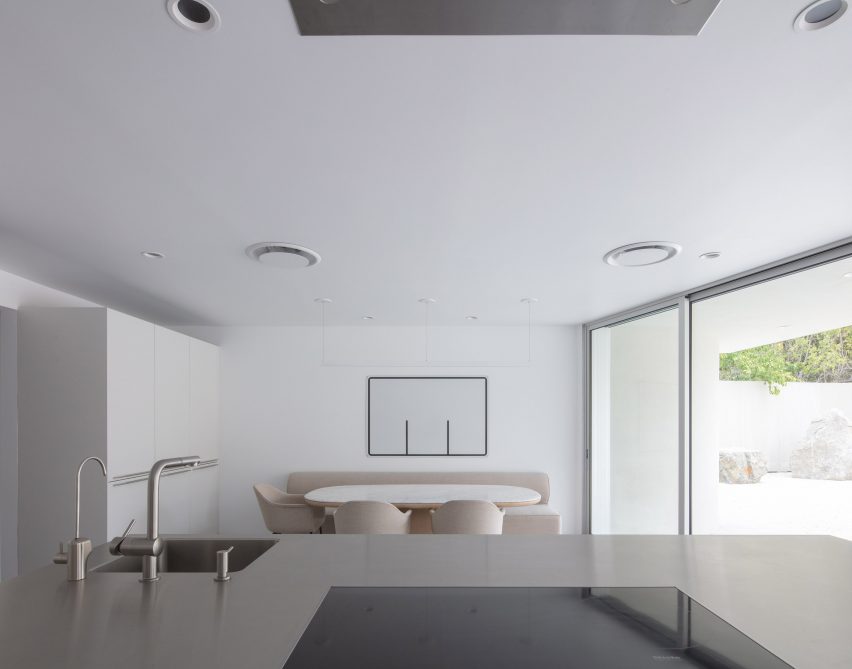
"The material exemplifies the Hancock Park House's play between austerity and softness," Leong said.
Wrapped in anodized aluminium extrusions, a media room floats like an object in the centre of the plan, doubling as a black box screening room and a family room.
In addition to sustainable material choices, all gas fixtures were replaced with electric-only appliances.
To reduce water usage, the landscaping is drought tolerant "xeriscape." A plant-free rock garden with locally sourced boulders replaced the grass yard, and drought-tolerant plants like aloes, euphorbia and ocotillo are fed by a weather-aware HydroWise drip irrigation system.
Led by Chris and Dominic Leong, the studio recently completed the Hollywood campus for the LGBT+ Centre with Killefer Flammang Architects (KFA) and a permanent store for online fashion brand Everlane in Soho in Manhattan.
The photography is by Naho Kubota.
Project credits:
Design architect: Leong Leong
Executive architect: Leong Architects Inc.
Lighting design: Leong Leong
Interior design: Leong Leong
Contractor: Uhles Construction
Civil engineering: Delane Engineering
Structure: Workpoint
Landscape/hardscape/pool design: Leong Leong in collaboration with Johnston Vidal Projects
Landscape/hardscape contractor: Johnston Vidal Projects
Pool and water features contractor: Johnston Vidal Projects
Theater contractor: Fantastic Theaters
Kitchen cabinetry: bulthaup
Solar/battery: Tesla Energy